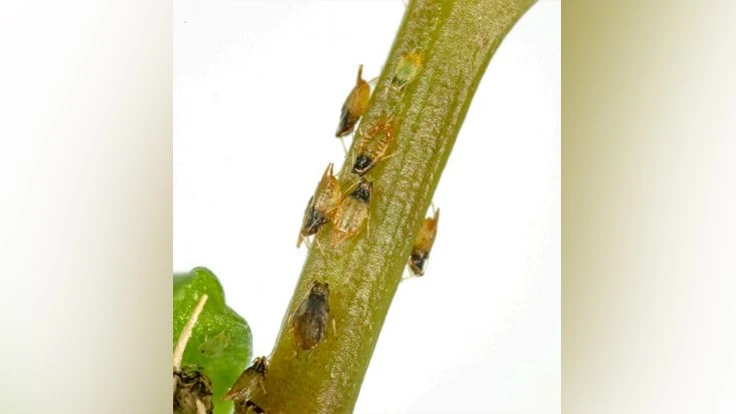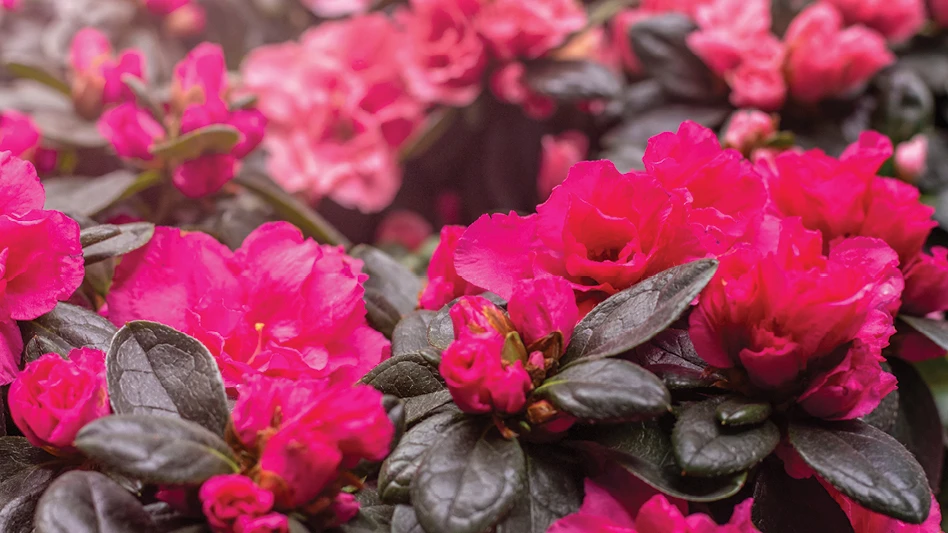
Photo: Jeff Lotz, DPI
The Florida Department of Agriculture and Consumer Services’ Division of Plant Industry has released the following pest alert:
INTRODUCTION: On August 22, 2018, from Longwood, Seminole County, Florida, Jesse Krok (DPI) collected a sample of aluminum plant (Pilea cadeirei Gagnep. & Guill.) infested with all life stages of the aphid Myzus fataunae Shinji 1924 (after Takahashi 1965). Myzus fataunae is native to Japan and Korea; this represents the first record of the species in the Western Hemisphere.
HOSTS: The species was described originally from Fatoua (Moraceae) (Shinji 1924), though subsequent collections have been from members of the Urticaceae: aluminum plant, Pilea cadierei Gagnep. & Guill.; Canadian or Japanese clearweed, Pilea pumila (hamaoi) (L.) A. Gray; and other ornamental Pilea, Boehmeria and Parietaria species (Takahashi 1965, Miyazaki 1971, Blackman & Eastop 2018).
SURVEY: A hand lens is necessary to survey for M. fataunae. Other aphids may be present on the host and potential host plants, but the target will stand out by its small size and distinct bicoloration. Myzus fataunae appears to feed on all aboveground parts of the plant, but favors new growth and petioles. Cut potentially infested plant parts and place them in a vial of alcohol. Alternatively, separate foliage from roots (to prevent soil particles from obscuring aphids) and beat it against the side of a shallow white tray; then, tap the plant material over the tray using a pencil. Inspect dislodged debris on the tray using a hand lens and, with a brush, transfer the aphids into alcohol.
FIELD SCREENING: Myzus fataunae is a minute aphid (0.9-1.0 mm). The adult, wingless forms are two-toned, with a brown head and thorax and yellow abdomen. Young immatures are entirely greenish white, while older instars develop the bicoloration. Most diagnostic characters cannot be seen without high-powered optics. When surveying on the plant, look for small, bi-colored specks.
REFERENCES:
Blackman, R. L., and V. F. Eastop. 2018. Aphids on the World’s Plants. Available at
http://www.aphidsonworldsplants.info/index.htm (Last accessed September 2018).
Miyazaki, M. 1971. A Revision of the Tribe Macrosiphini of Japan (Homoptera: Aphididae, Aphidinae). Insecta Matsumurana 31 (1): 1–247.
Shinji, O. 1924. New Aphids from Morioka. Dobutsugaku Zasshi 36 (431): 343–372.
Takahashi, R. 1965. Myzus of Japan (Aphididae). Mushi 38 (9): 43–78
Get curated news on YOUR industry.
Enter your email to receive our newsletters.Latest from Greenhouse Management
- Growing enlightened
- American Floral Endowment awards 17 organizations $60,700 in educational grants
- Floral businesses invited to join Society of American Florists' Petal It Forward event in October
- Bioline AgroSciences acquires Viridaxis to strengthen leadership in aphids biocontrol
- Ryley Leech joins JumpLights as vice president of sales
- Meet the Retailers' Choice Awards from 2025 Farwest Show
- Added value
- National Garden Bureau announces featured crops for 2026 'Year of the' program






